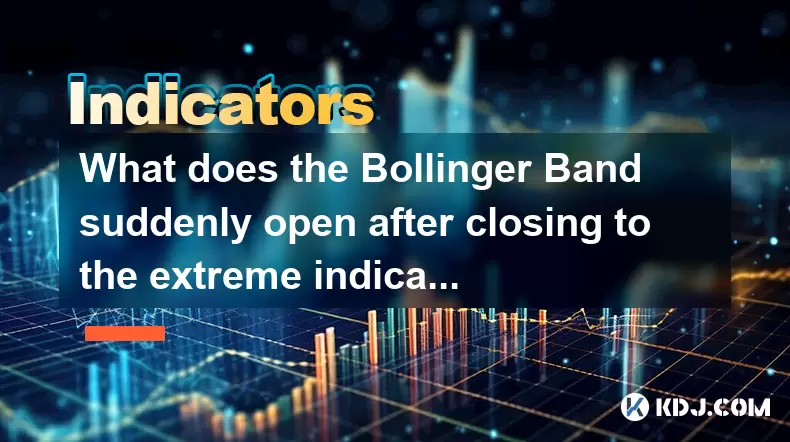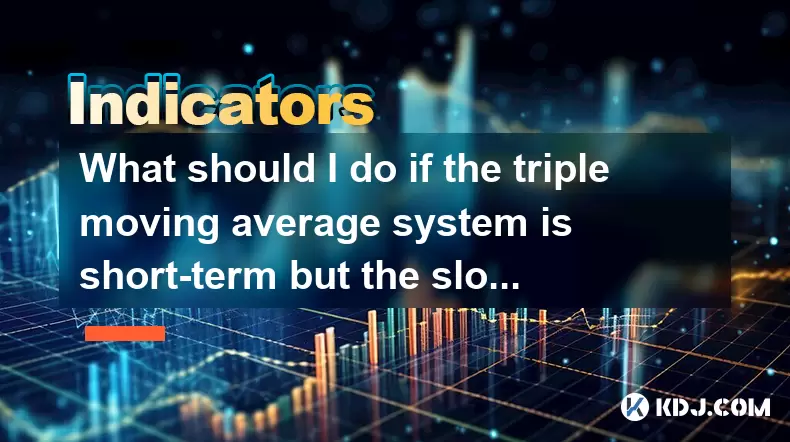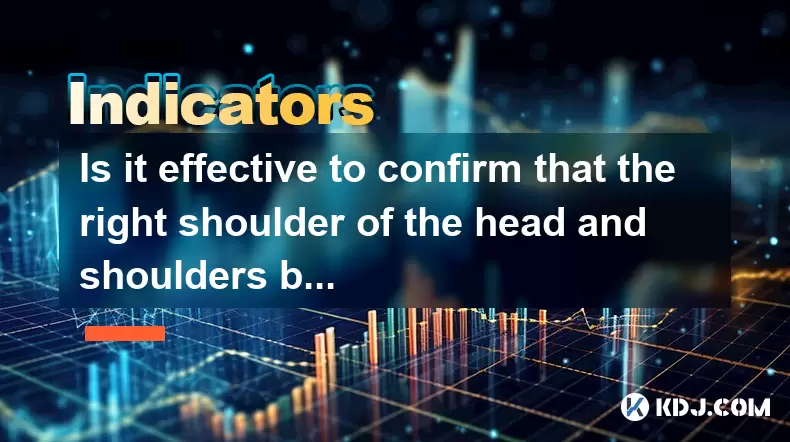-
 Bitcoin
Bitcoin $106,754.6083
1.33% -
 Ethereum
Ethereum $2,625.8249
3.80% -
 Tether USDt
Tether USDt $1.0001
-0.03% -
 XRP
XRP $2.1891
1.67% -
 BNB
BNB $654.5220
0.66% -
 Solana
Solana $156.9428
7.28% -
 USDC
USDC $0.9998
0.00% -
 Dogecoin
Dogecoin $0.1780
1.14% -
 TRON
TRON $0.2706
-0.16% -
 Cardano
Cardano $0.6470
2.77% -
 Hyperliquid
Hyperliquid $44.6467
10.24% -
 Sui
Sui $3.1128
3.86% -
 Bitcoin Cash
Bitcoin Cash $455.7646
3.00% -
 Chainlink
Chainlink $13.6858
4.08% -
 UNUS SED LEO
UNUS SED LEO $9.2682
0.21% -
 Avalanche
Avalanche $19.7433
3.79% -
 Stellar
Stellar $0.2616
1.64% -
 Toncoin
Toncoin $3.0222
2.19% -
 Shiba Inu
Shiba Inu $0.0...01220
1.49% -
 Hedera
Hedera $0.1580
2.75% -
 Litecoin
Litecoin $87.4964
2.29% -
 Polkadot
Polkadot $3.8958
3.05% -
 Ethena USDe
Ethena USDe $1.0000
-0.04% -
 Monero
Monero $317.2263
0.26% -
 Bitget Token
Bitget Token $4.5985
1.68% -
 Dai
Dai $0.9999
0.00% -
 Pepe
Pepe $0.0...01140
2.44% -
 Uniswap
Uniswap $7.6065
5.29% -
 Pi
Pi $0.6042
-2.00% -
 Aave
Aave $289.6343
6.02%
What does the Bollinger Band suddenly open after closing to the extreme indicate? Can I follow up?
Bollinger Bands expand after a squeeze, signaling rising volatility and potential breakout opportunities in crypto markets.
Jun 17, 2025 at 11:08 pm

Understanding the Bollinger Band Mechanism
Bollinger Bands are a widely used technical analysis tool in cryptocurrency trading. They consist of three lines: a simple moving average (SMA) in the center, and two outer bands that represent standard deviations above and below the SMA. These bands dynamically adjust to price volatility, expanding during high volatility and contracting during low volatility.
In the context of cryptocurrency markets, where prices can be highly volatile, Bollinger Bands help traders identify potential overbought or oversold conditions. When the price touches or moves outside the upper band, it may signal an overbought condition, while touching the lower band might indicate an oversold state. However, these signals should not be taken in isolation without considering other indicators and market context.
The Significance of Bollinger Band Contraction
When Bollinger Bands suddenly close to an extreme, this is often referred to as a "squeeze." A squeeze occurs when the bands contract tightly around the price, indicating very low volatility. This phase typically precedes a sharp price movement, though the direction—up or down—is not immediately clear from the squeeze alone.
In the crypto market, such a contraction often builds up anticipation among traders. It's like a coiled spring ready to release energy. The key here is to monitor volume and wait for a breakout signal. A low volatility period followed by a sudden expansion can lead to explosive moves, especially in assets like Bitcoin or Ethereum, which are known for their wild swings.
What Happens When Bollinger Bands Suddenly Open?
After a prolonged contraction, if Bollinger Bands suddenly open, it signifies a surge in volatility. This usually coincides with a breakout from a consolidation phase. The price may shoot upward or plunge downward depending on market sentiment and order flow.
For instance, if there’s a positive news event or a major development affecting a particular cryptocurrency, it could trigger a rapid price move outward. The bands expand rapidly, reflecting the increased deviation in price action. This moment is critical for traders who use mean reversion strategies, as well as those who trade breakouts.
It's important to note that once the bands open, the price may continue in the breakout direction for some time. Traders often look for confirmation through candlestick patterns, volume surges, or auxiliary indicators like Relative Strength Index (RSI) or Moving Average Convergence Divergence (MACD) before entering a trade.
Can You Follow Up After the Bands Open?
The question of whether to follow up after the Bollinger Bands suddenly open depends on your trading strategy and risk tolerance. There are two main approaches:
- Breakout traders often enter positions as soon as the price breaks out of the narrow range formed during the squeeze. They rely on momentum and expect the trend to continue.
- Mean reversion traders, on the other hand, may wait for a pullback or retest of the breakout level before entering, aiming to catch a reversal or continuation at a better price.
To make an informed decision:
- Look for increased volume accompanying the breakout.
- Confirm with support/resistance levels.
- Check for moving average alignment—if the price is above the 20-period SMA during an uptrend, it strengthens the case for going long.
Entering too early without confirmation can result in false signals, especially in fast-moving crypto markets.
Risks and Considerations When Following the Band Expansion
While the sudden opening of Bollinger Bands can present lucrative opportunities, it also comes with significant risks:
- Whipsaws: Markets can quickly reverse direction after a brief breakout, trapping traders who entered too soon.
- False breakouts: Especially in low-liquidity altcoins, large players can manipulate prices to trigger stop losses before reversing direction.
- Overextended moves: Prices that move sharply beyond the bands can become overbought or oversold quickly, leading to corrections.
To mitigate these risks:
- Use tight stop-loss orders to protect capital.
- Avoid chasing the price once it has already moved significantly.
- Combine Bollinger Bands with volume indicators and trend filters to increase accuracy.
Proper position sizing is essential, particularly in crypto trading, where even small moves can have outsized impacts due to leverage.
FAQs
Q: What time frame is best for observing Bollinger Band squeezes in crypto trading?
A: While squeezes can occur on any time frame, many traders prefer using the 1-hour or 4-hour chart for more reliable signals. Shorter time frames like the 5-minute or 15-minute charts can show frequent squeezes but often result in noise and false signals.
Q: Can Bollinger Bands be used effectively in sideways markets?
A: Yes, but with caution. In range-bound markets, Bollinger Bands can help identify potential bounces between support and resistance. However, during strong trends, they may give misleading signals unless combined with other tools like Ichimoku Cloud or Fibonacci retracements.
Q: Is it advisable to use Bollinger Bands alone for making trading decisions in crypto?
A: No, relying solely on Bollinger Bands can lead to poor decisions. They work best when used alongside volume indicators, moving averages, and sentiment analysis. Always consider the broader market context and avoid isolated interpretations.
Q: How do I know if a breakout after a Bollinger Band squeeze is genuine?
A: A genuine breakout is usually confirmed by high trading volume, a candle closing outside the bands, and follow-through momentum in the next few candles. If the price quickly returns inside the bands without sustained volume, the breakout is likely false.
Disclaimer:info@kdj.com
The information provided is not trading advice. kdj.com does not assume any responsibility for any investments made based on the information provided in this article. Cryptocurrencies are highly volatile and it is highly recommended that you invest with caution after thorough research!
If you believe that the content used on this website infringes your copyright, please contact us immediately (info@kdj.com) and we will delete it promptly.
- 2025-W Uncirculated American Gold Eagle and Dr. Vera Rubin Quarter Mark New Products
- 2025-06-13 06:25:13
- Ruvi AI (RVU) Leverages Blockchain and Artificial Intelligence to Disrupt Marketing, Entertainment, and Finance
- 2025-06-13 07:05:12
- H100 Group AB Raises 101 Million SEK (Approximately $10.6 Million) to Bolster Bitcoin Reserves
- 2025-06-13 06:25:13
- Galaxy Digital CEO Mike Novogratz Says Bitcoin Will Replace Gold and Go to $1,000,000
- 2025-06-13 06:45:13
- Trust Wallet Token (TWT) Price Drops 5.7% as RWA Integration Plans Ignite Excitement
- 2025-06-13 06:45:13
- Ethereum (ETH) Is in the Second Phase of a Three-Stage Market Cycle
- 2025-06-13 07:25:13
Related knowledge

How to interpret the low opening the next day after the long lower shadow hits the bottom?
Jun 18,2025 at 12:22am
Understanding the Long Lower Shadow Candlestick PatternIn technical analysis, a long lower shadow candlestick is often seen as a potential reversal signal in a downtrend. This pattern occurs when the price opens, trades significantly lower during the session, but then recovers to close near the opening price or slightly above. The long wick at the botto...

How to operate the RSI indicator repeatedly in the 40-60 range?
Jun 18,2025 at 12:56am
Understanding the RSI Indicator and Its RelevanceThe Relative Strength Index (RSI) is a momentum oscillator widely used in cryptocurrency trading to measure the speed and change of price movements. Typically, the RSI ranges from 0 to 100, with levels above 70 considered overbought and below 30 considered oversold. However, when the RSI repeatedly stays ...

How strong is the MACD golden cross below the zero axis?
Jun 17,2025 at 11:00pm
Understanding the MACD Indicator in Cryptocurrency TradingThe Moving Average Convergence Divergence (MACD) is one of the most widely used technical indicators among cryptocurrency traders. It helps identify potential trend reversals, momentum shifts, and entry or exit points. The MACD consists of three main components: the MACD line, the signal line, an...

What should I do if the triple moving average system is short-term but the slope slows down?
Jun 18,2025 at 04:35am
Understanding the Triple Moving Average SystemThe triple moving average system is a popular technical analysis tool used in cryptocurrency trading. It involves using three different moving averages—typically the short-term (e.g., 10-period), medium-term (e.g., 20-period), and long-term (e.g., 50-period) moving averages. When the short-term average cross...

How effective is the golden cross of the William indicator double line in the oversold area?
Jun 17,2025 at 11:56pm
Understanding the William Indicator and Its Double Line SetupThe William %R (Williams Percent Range) is a momentum oscillator used to identify overbought or oversold conditions in a market. It ranges from 0 to -100, with readings above -20 considered overbought and below -80 deemed oversold. The double line setup refers to plotting two different timefra...

Is it effective to confirm that the right shoulder of the head and shoulders bottom volume at the 30-minute level is enlarged?
Jun 17,2025 at 11:42pm
Understanding the Head and Shoulders Pattern in Cryptocurrency TradingThe head and shoulders pattern is one of the most recognized reversal patterns in technical analysis, especially within cryptocurrency trading. It typically signals a potential shift from a bullish trend to a bearish one. This pattern consists of three peaks: the left shoulder, the he...

How to interpret the low opening the next day after the long lower shadow hits the bottom?
Jun 18,2025 at 12:22am
Understanding the Long Lower Shadow Candlestick PatternIn technical analysis, a long lower shadow candlestick is often seen as a potential reversal signal in a downtrend. This pattern occurs when the price opens, trades significantly lower during the session, but then recovers to close near the opening price or slightly above. The long wick at the botto...

How to operate the RSI indicator repeatedly in the 40-60 range?
Jun 18,2025 at 12:56am
Understanding the RSI Indicator and Its RelevanceThe Relative Strength Index (RSI) is a momentum oscillator widely used in cryptocurrency trading to measure the speed and change of price movements. Typically, the RSI ranges from 0 to 100, with levels above 70 considered overbought and below 30 considered oversold. However, when the RSI repeatedly stays ...

How strong is the MACD golden cross below the zero axis?
Jun 17,2025 at 11:00pm
Understanding the MACD Indicator in Cryptocurrency TradingThe Moving Average Convergence Divergence (MACD) is one of the most widely used technical indicators among cryptocurrency traders. It helps identify potential trend reversals, momentum shifts, and entry or exit points. The MACD consists of three main components: the MACD line, the signal line, an...

What should I do if the triple moving average system is short-term but the slope slows down?
Jun 18,2025 at 04:35am
Understanding the Triple Moving Average SystemThe triple moving average system is a popular technical analysis tool used in cryptocurrency trading. It involves using three different moving averages—typically the short-term (e.g., 10-period), medium-term (e.g., 20-period), and long-term (e.g., 50-period) moving averages. When the short-term average cross...

How effective is the golden cross of the William indicator double line in the oversold area?
Jun 17,2025 at 11:56pm
Understanding the William Indicator and Its Double Line SetupThe William %R (Williams Percent Range) is a momentum oscillator used to identify overbought or oversold conditions in a market. It ranges from 0 to -100, with readings above -20 considered overbought and below -80 deemed oversold. The double line setup refers to plotting two different timefra...

Is it effective to confirm that the right shoulder of the head and shoulders bottom volume at the 30-minute level is enlarged?
Jun 17,2025 at 11:42pm
Understanding the Head and Shoulders Pattern in Cryptocurrency TradingThe head and shoulders pattern is one of the most recognized reversal patterns in technical analysis, especially within cryptocurrency trading. It typically signals a potential shift from a bullish trend to a bearish one. This pattern consists of three peaks: the left shoulder, the he...
See all articles

























































































